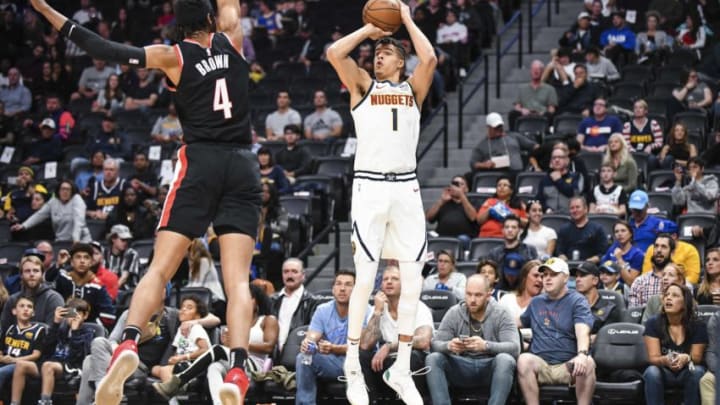The Portland Trail Blazers remain one of just two NBA teams without a G-League affiliate. Despite a proven track record of developing talent, will they ever put one together? And why should they?
If one wanted to gauge just how impactful the G-League system has been for some of the NBA’s most ambitious franchises, the NBA Finals should suffice. Over the last two NBA Finals, a whopping 28 different players have emerged from the league’s developmental system, including an NBA-record 16 during the 2019 tilt.
Those names run deep, from reputable All-Stars like Pascal Siakam to top-shelf role players such as Danny Green, Duncan Robinson, Shaun Livingston, and Alex Caruso. The benefits have been reaped, documented, and broadcasted. As our generation would say, they’ve been caught in 4K.
So, why haven’t the Portland Trail Blazers caught on?
The Trail Blazers are one of just two teams league wide without a G-League affiliate to call their own, joining the Denver Nuggets.
Longtime supporters might remember in the early-2010s, when the Portland Trail Blazers created ties with the Idaho Stampede. In the winter of 2014, the Blazers sent a future generational scorer by the name of CJ McCollum to the Stampede, where he averaged 17.5 points per game over a two-game sample size.
That experiment didn’t last long, though. Portland proved that it was a team more apt to foster players under their own expertise and training facilities.
A few seasons ago, it appeared the Blazers were warming up to the idea of developmental talent. Per Dakota Schmidt of Blazers Edge, Blazers general manager Neil Olshey had been studying how some of the Western Conference’s premier teams had created a homegrown system through the G-League, and found success through those prospects.
As we soon learned thereafter, Olshey and the Trail Blazers stood pat. But a few factors over the past few weeks have led one to wonder why — if the world returns to normalcy at some point — they wouldn’t consider re-opening that.
For starters, most see the Blazers’ biggest need being a 3-and-D wing. If their roster looks similar to last season, wouldn’t it be quite difficult getting them the requisite reps and playing time?
Rationing out minutes to say, Rodney Hood, Trevor Ariza, Carmelo Anthony, Nassir Little, Wenyen Gabriel, Mario Hezonja, and Gary Trent Jr. could be difficult, especially if health permits.
Adding to that, we know that Portland has been linked to more long-term project-based players. Perhaps it’s best to leave them a best kept secret in the annals of the Moda Center practice facility, and sneak on the opposition à la McCollum in 2015, or Simons in 2018.
But, as long as the Blazers and Nuggets remain the lone two out of the G-League equation, it’ll always be a question to entertain. Dating back to, say, the MLB with Branch Rickey’s farm system with the minor league affiliates, the positives of a lower-league team will always outweigh the negatives. It’s an ideal way to round out skills.
Perhaps Thunder forward Darius Bazley said it best in 2018: It becomes a place where a young athlete can “get mine,” and set their scope solely on development. As Bazley would later prove through his work in the Thunder’s postseason run this past summer, he knew when and how to dial it back, and focus on team wins, too.
Thinking about the semantics of how the Trail Blazers like to draft and develop athletes — and in particular, their affinity for those virtuosic scoring guards, the G-League becomes a convenient check-in for guards with that mentality. Just as the NBA has become a hub for screen-and-roll ball handler play and spot-up shooting prowess, the G-League has come to follow that trend.
Subjectively, the Portland Trail Blazers are going to remain excellent when it comes to developing talent, regardless of how they pursue it. Players like McCollum and Trent Jr. are prime examples of that. And, they’ve proven they aren’t scared to find talent from other teams’ G-League affiliates; see G-League Most Valuable Player Jaylen Adams, Texas Legends’ bigs Moses Brown and Jaylen Hoard.
But, as they add youth to a stacked (if healthy) roster, one has to think the g-word will continue to come up, as more teams use it to create talent from the ground up.
